Film Room: How Eli Manning is finding his groove in the Giants' new offense
In 2002, then-New York Giants general manager Ernie Accorsi travelled to Mississippi to study quarterback Eli Manning.
Manning was a junior at Ole Miss, where he battled tough SEC defenses weekly. He was facing Auburn in the cold when Accorsi took notice. He saw that Manning had a lot of talent, while his teammates didn't, leading him to not trust his offensive line or his receivers. When either group performed well, it was because Manning elevated them and kept the team competitive.
On that particular day, through three quarters, Manning kept them alive with a 17-16 lead by making smart checks at the line and heroic throws downfield. At times he forced it, throwing three interceptions and causing his team to fall behind. Auburn won 31-24. Despite it all, Accorsi was impressed and filed a scouting report.
Two years later, he traded for Manning in the 2004 NFL draft.
A decade since the pick, Manning’s back to his college ways. He’s carrying a new offense that was installed in the offseason. He doesn’t trust his offensive line, which has caved in at times, and doesn't have much of a tight end, so the middle of the field isn't as effective as it should be. He's rushing throws and throwing away opportunities because his running backs are late to the flats. He's reduced to three-step passes even though his receivers can't separate from defensive backs, as seen in Week 1 against the Detroit Lions.
Manning had a wide receiver and a tight end to his right on a concept that was supposed to sync his feet with the pass catchers'. When Manning takes a three-step drop, the receiver is supposed to run a three-step slant.
But when Manning hit his third step, the receiver wasn’t open.
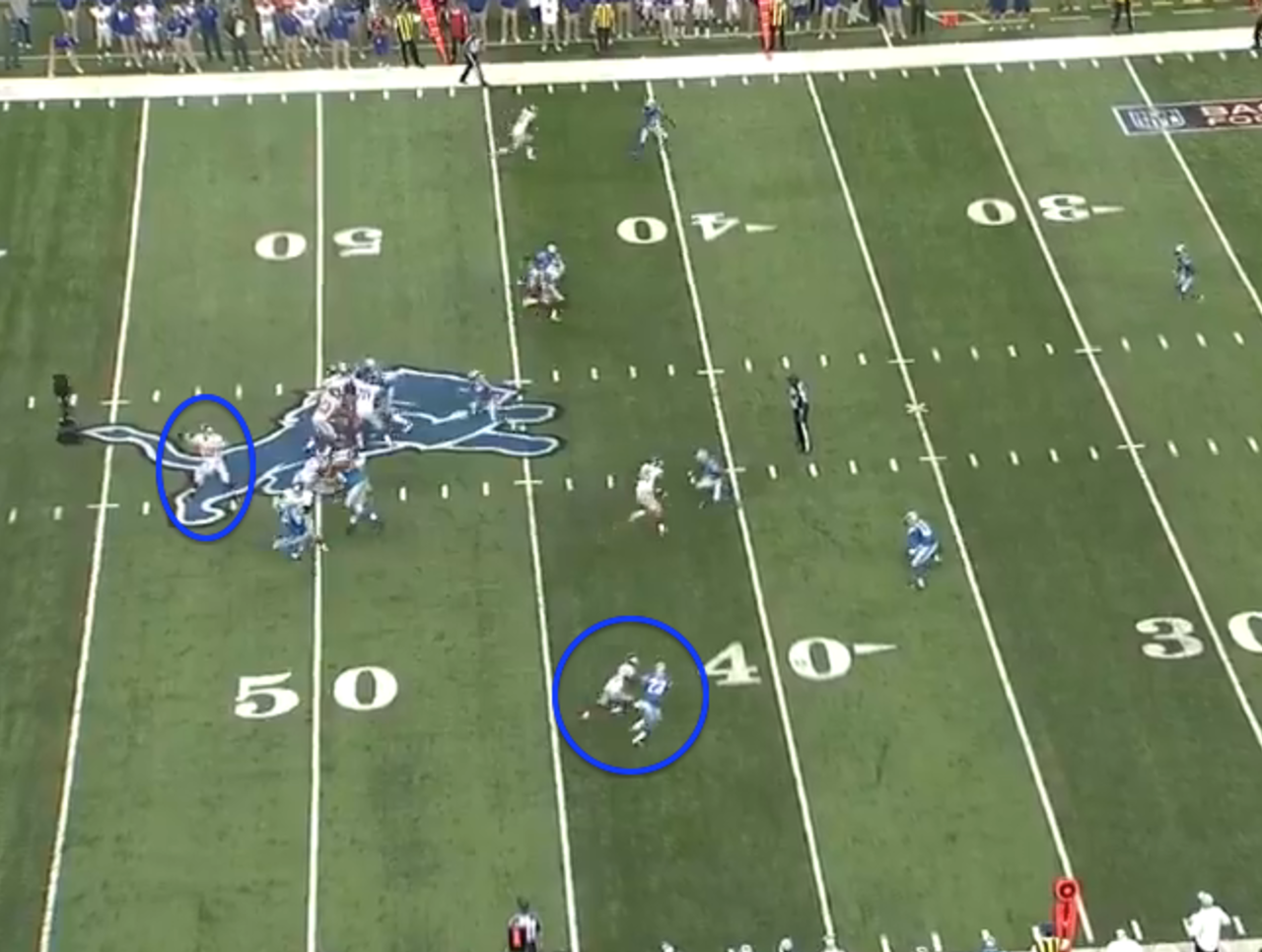
The receiver beat the cornerback at the line and jostled for five steps before finally cutting to the middle. By then, Manning already got rid of the ball even though the timing was off. If he didn’t, he would’ve been clobbered by the pass-rush.
The throw was high and behind the receiver’s back shoulder, setting up a second-and-long and putting the offense in a hole.
"... When he's inaccurate, he's usually high, but rarely off target to either side …" - Accorsi's 2002 scouting report
Manning’s offensive coordinator Ben McAdoo continued to dial three-step passes in hopes of generating offense. This time, he turned to a seam-busting concept that was the perfect call against the Lions’ Cover-4.
It was first-and-10 at midfield, and Manning was in shotgun set. He had two pass catchers to each side of him, including an in-line tight end who was supposed to run a bend route past the outside linebacker. Manning would anticipate him coming across and throw it into the vacant middle of the field.
Except when the play began and the tight end ran past the linebacker to the middle of the field, Manning didn’t throw the ball despite looking at him.
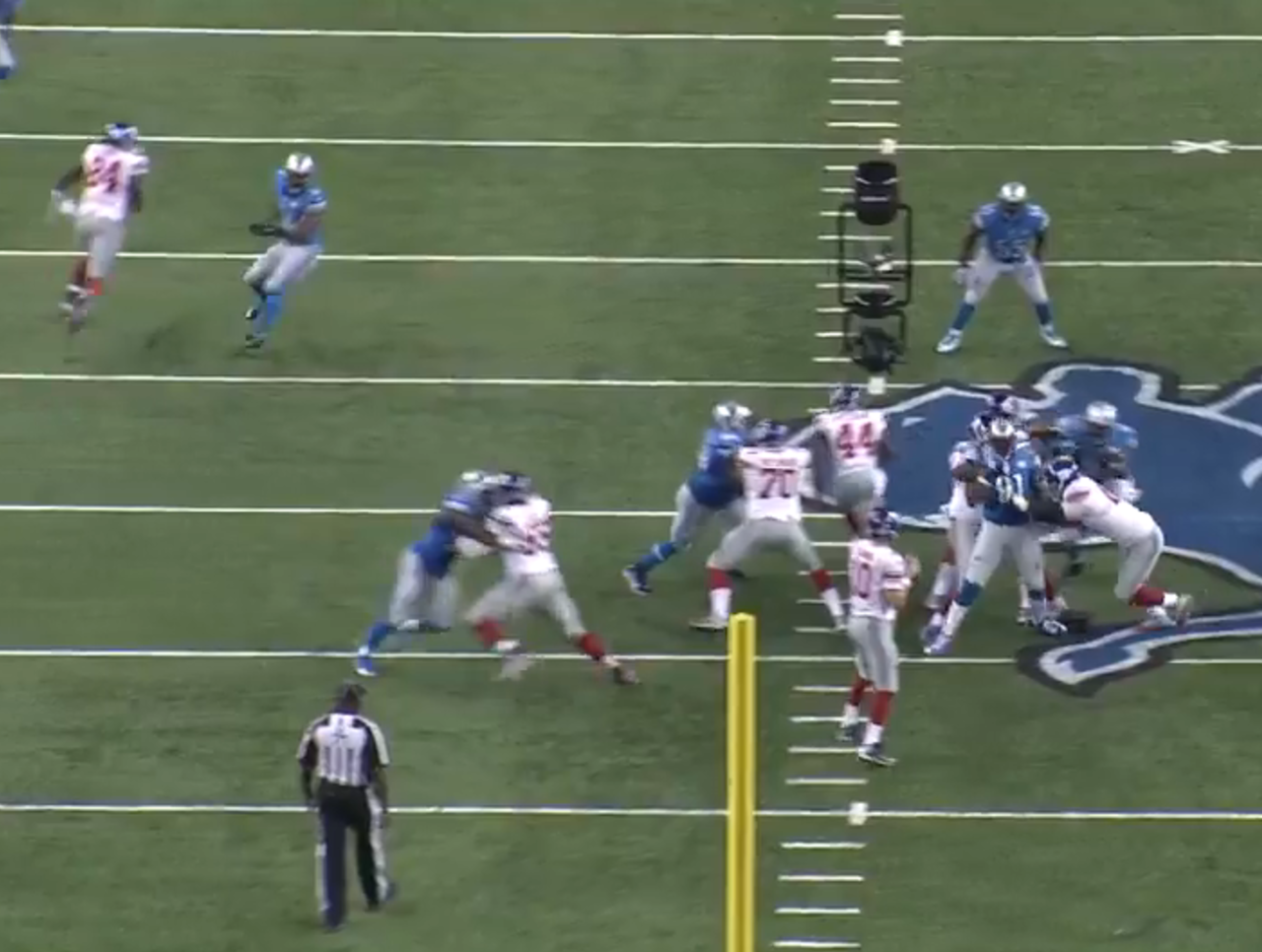
He didn’t trust him to make the catch. He stood in the pocket instead and was pressured up the middle by a defensive end, forcing him to throw the ball away.
"… he's stuck with the three-step drops and waiting til the last second to see if a receiver can get free. No tight end either." - Accorsi's 2002 scouting report
By the end of the game, the Lions beat the Giants, 35-14. Manning didn't have a running game to speak of, while his receivers were nonexistent. He threw two interceptions and averaged 4.9 yards per attempt, two yards less than the league average.
In Week 2, the Arizona Cardinals didn't show Manning and his cast respect. They played primarily single-high coverage, letting their athletes matchup with the Giants'.
Manning started to earn some respect back during the game by being more patient and trustworthy of his teammates. The offensive line kept him mostly upright by not letting him get hit once, an upgrade from the four hits in Week 1, per Pro Football Focus. His pass catchers did a better job of getting off the line, and he found mismatches with his running backs in the flat.
On second-and-7, Manning saw two-deep coverage by the Cardinals. They were masking Cover-1, a man coverage with only a free safety playing zone in the deep middle. He didn’t mind it, though, when he play-faked and looked downfield. None of his receivers were open, but his offensive line was holding up and giving him time to go through his reads.
Running back Rashad Jennings and the tight end cross released out of the backfield underneath, causing some confusion among the defenders. An inside linebacker covered the tight end, while a safety hesitated to cover Jennings until it was too late.
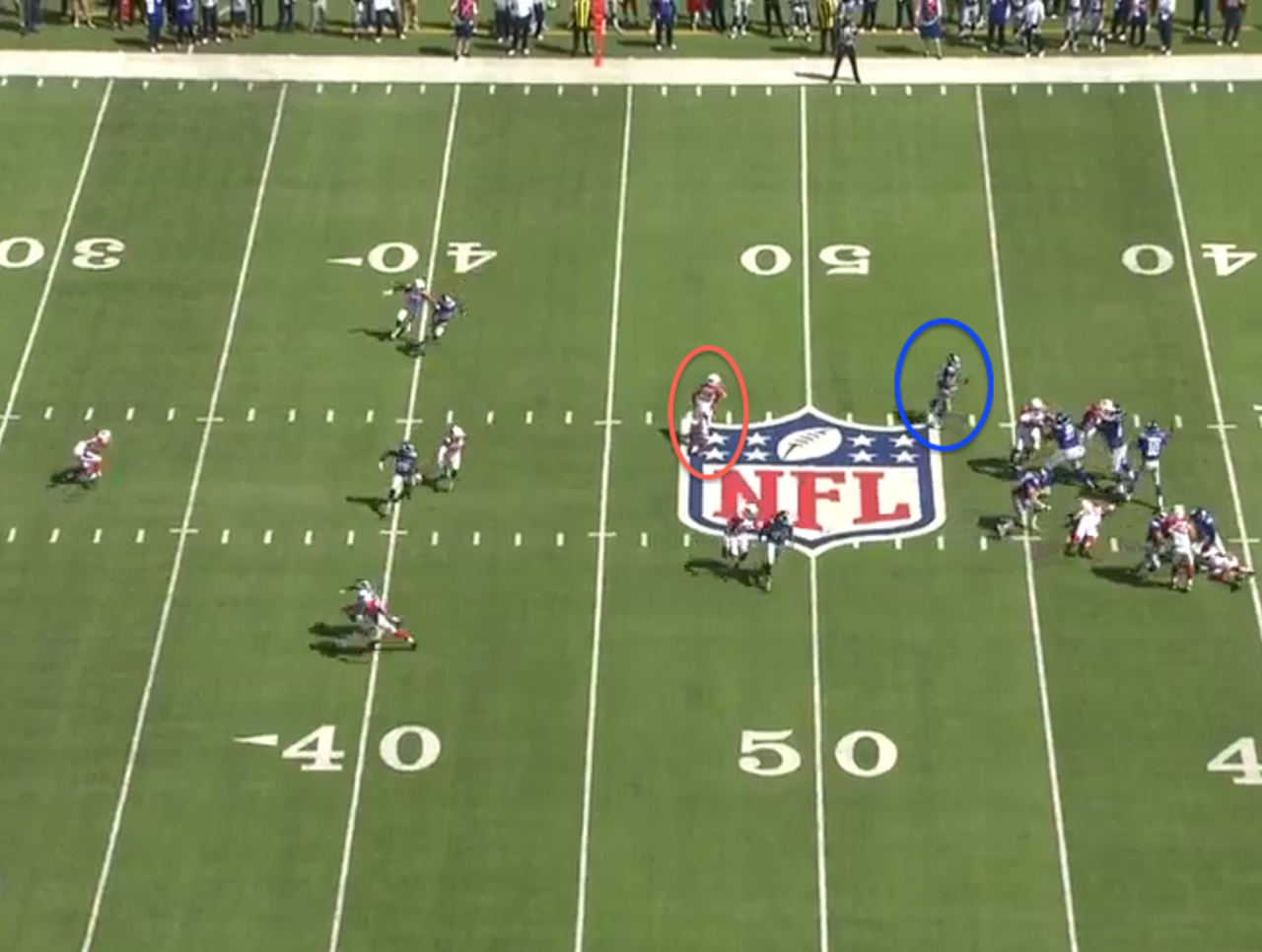
Manning saw the safety running late across the field and dumped the pass off to Jennings, who broke the safety’s tackle to run for 19 yards.
Manning didn’t always check down to his running backs in Week 1. If he did throw it to them, they were mostly screen passes or designed slant-flat concepts where a wide receiver created a pick on a defensive back. There were times when they were open as outlets, but he threw the football away instead. He distrusted not just them, but his offensive line, too.
Against the Cardinals, Manning showed more trust in them, as well as his receivers, including fifth-year man Victor Cruz.
Cruz ran poor routes and dropped two passes against the Lions. He struggled to get open, so Manning looked away. Against the Cardinals, he did a better job of running routes and when Manning found him, he made big plays.
An important third-and-11 turned up late in the first half when the offense was at their own 48. They were down 10 and needed a boost going into halftime. Manning dropped back and rolled slightly to his right, where Cruz ran a vertical stem outside, while bracketed inside and over the top by a cornerback and safety.
At the Cardinals 42-yard line, Cruz leaned outside and started to cut off of his right foot to separate from the cornerback. Simultaneously, Manning threw a perfect ball.
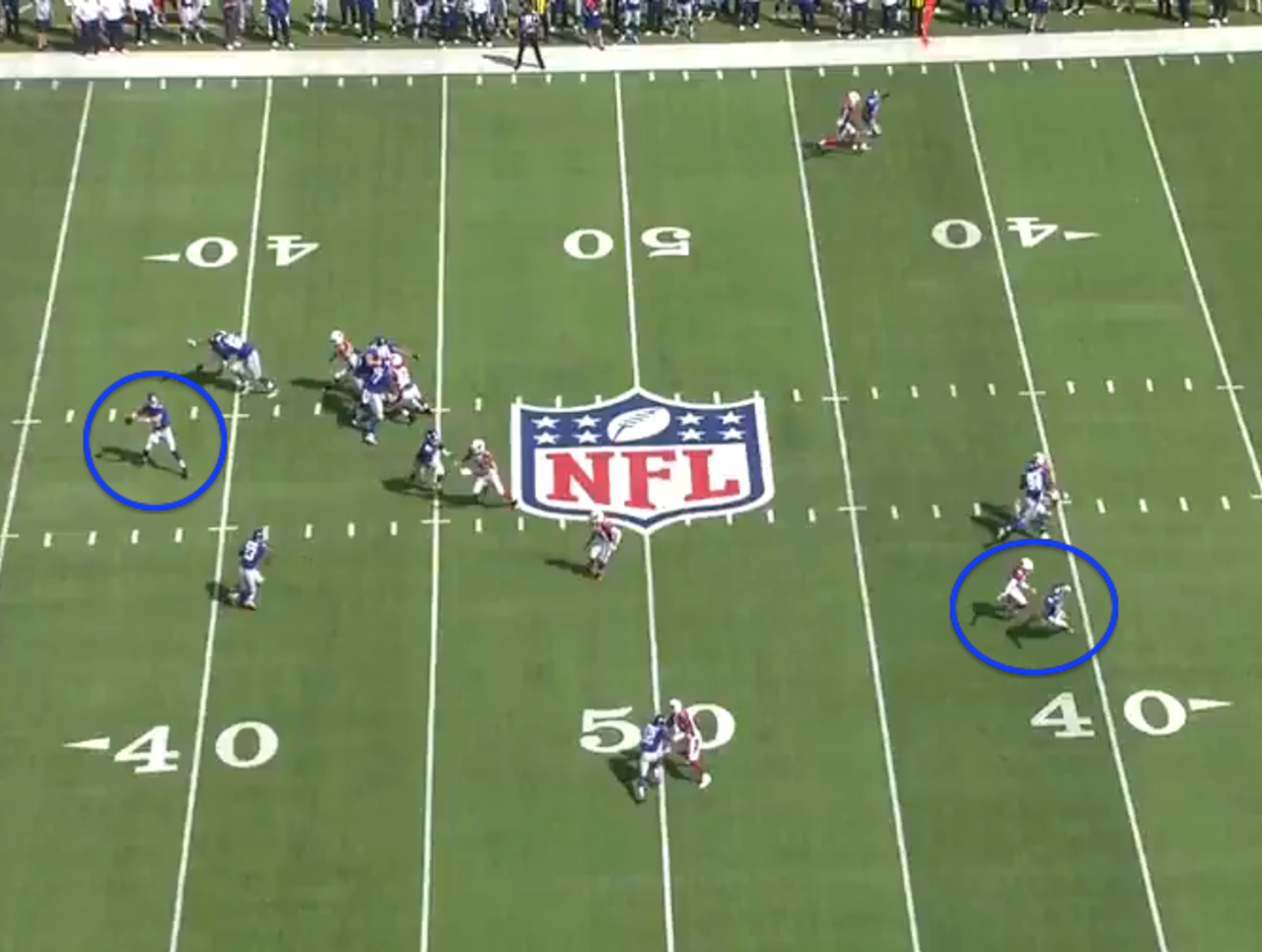
Cruz flattened out his route across the 38 and veered a couple yards more downfield, where Manning’s throw landed for a gain of 27. The catch yielded more yards than what he had all of last game (24).
It still wasn’t Cruz’s best game or biggest catch of the season. That came in Week 3 against the Houston Texans, when he caught five passes for 107 yards and one touchdown from Manning. The lone touchdown exemplified timing, communication and trust between he and Manning.
"... Called the next touchdown pass himself, checking off …" - Accorsi's 2002 scouting report
In a scoreless game, Manning was in shotgun set and saw the Texans’ deep safety showing blitz. The safety was walking toward the line of scrimmage with his shoulders down like a spear before he abruptly stopped. With one quick glance and a hand signal at Cruz, Manning changed the receiver’s route to a three-step slant.
When the play began, the safety blitzed and Manning hurried the ball out to Cruz, who hadn’t even cut to the middle.
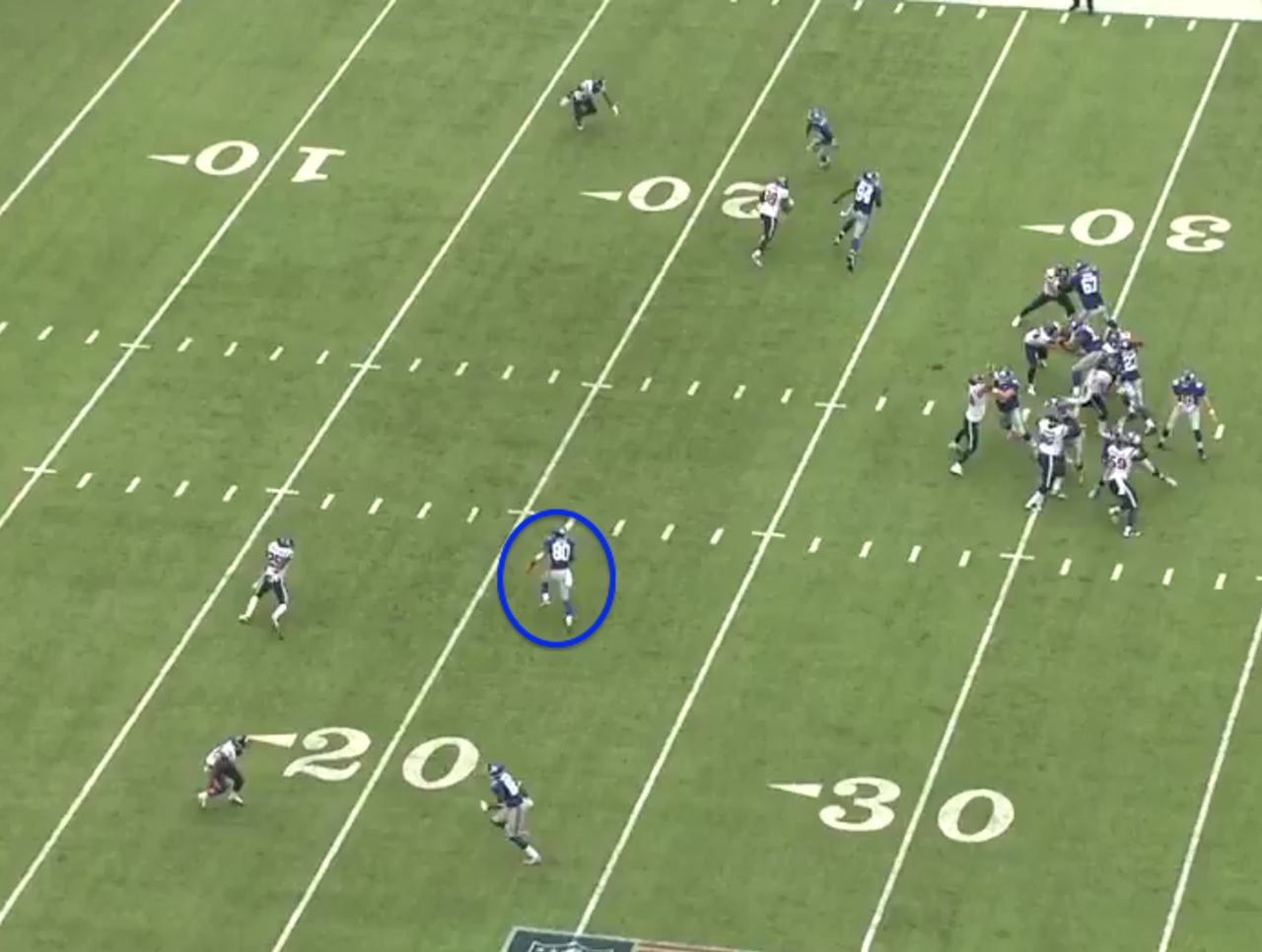
The throw led Cruz to exactly where the safety was originally standing in the middle. It was the perfect audible. With one perfect cut outside after the catch, Cruz scored a 26-yard touchdown.
These are the kind of plays Accorsi saw Manning make on that cold night in Mississippi. They're what gave him the conviction to draft Manning and make him the face of the franchise when they needed him most. Now they need him again, and he's pulling through.